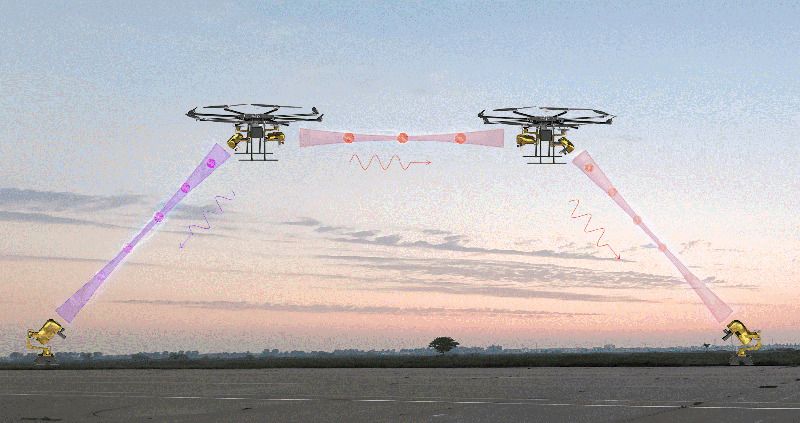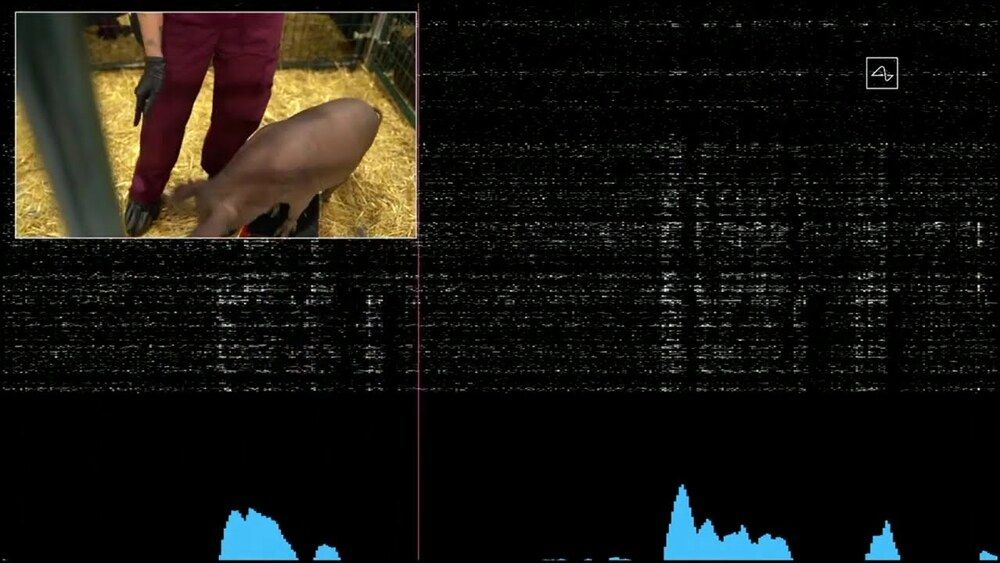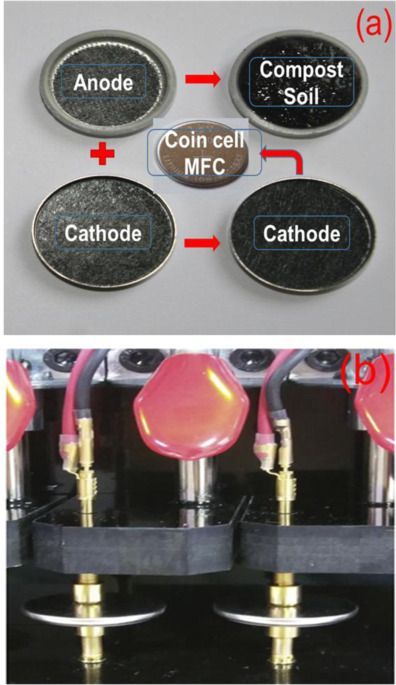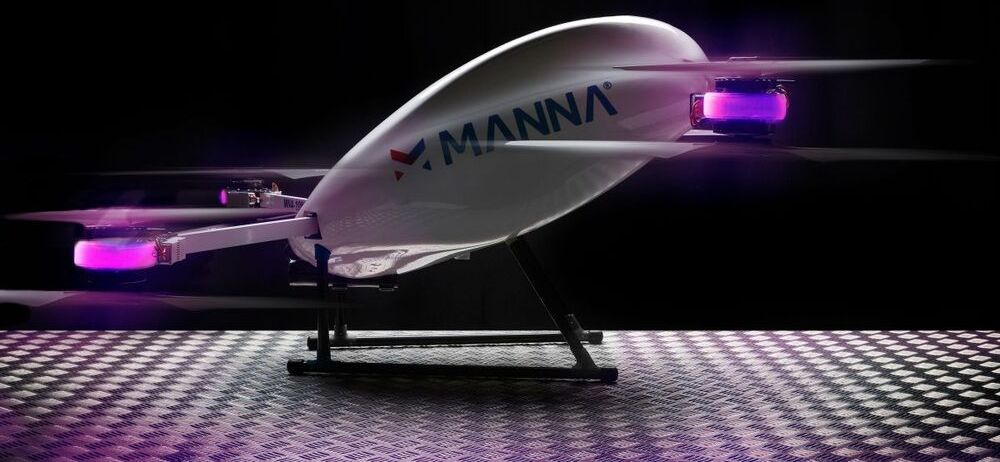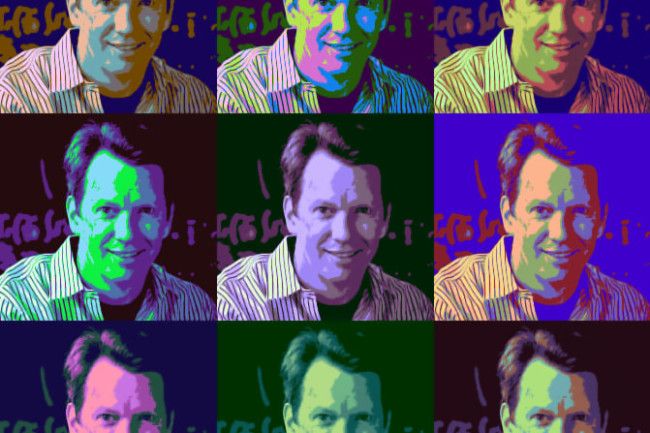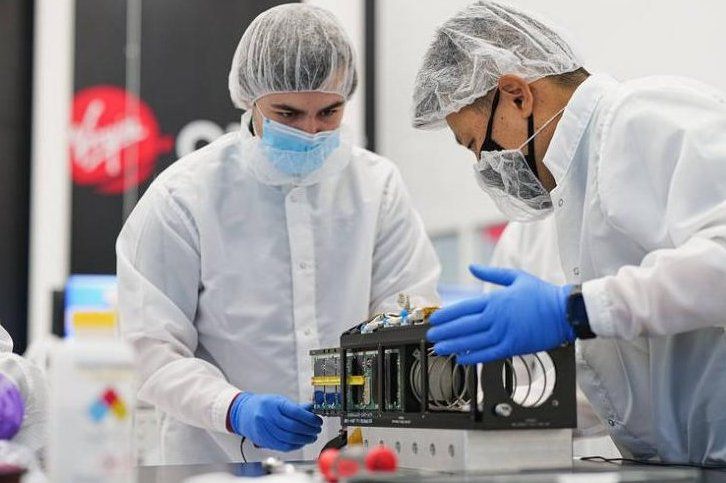A month later, Elon Musk’s company is trying again.
Remember the Hubble Deep Field? And its successor the Hubble Ultra Deep Field? We sure do here at Universe Today. How could we forget them?
Well, just as the Hubble Space Telescope has successors, so do two of its most famous images. And those successors will come from one of Hubble’s successors, NASA’s Roman Space Telescope.
The Hubble Deep Field and Ultra Deep Field showed a generation of people how expansive and wondrous the Universe is. They showed that even empty-looking patches of sky are, in fact, full of galaxies. All sizes, shapes, and ages of galaxies.
A small prototype of a drone-based quantum network has successfully relayed a quantum signal over a kilometer of free space.
The airwaves are chock full of “classical” information from cell phones, radio stations, and Wi-Fi hubs, but one day those waves could be carrying quantum encrypted messages or data input for a quantum computer. A new experiment has used a pair of hovering drones to dole out quantum information to two ground stations separated by 1 km [1]. This demonstration could lead to a drone-based quantum network that could be positioned—and easily repositioned—over a city or rural area.
Quantum communication promises fully secure message sharing. For example, two users could exchange encrypted messages using “entangled” photons, pairs of particles with a unique quantum-mechanical relationship. For every pair, one photon would be sent to each of the users, who would be alerted to any eavesdropping by a loss of entanglement between the photons. One of the most common methods for sending such quantum encrypted messages relies on optical fibers (see Viewpoint: Record Distance for Quantum Cryptography). But in fibers, a large fraction of the photons scatter before reaching their destination. More photons can survive if quantum information is transmitted through the atmosphere, as in the quantum link established using a Chinese satellite in 2018 (see Focus: Intercontinental, Quantum-Encrypted Messaging and Video). However, satellites are expensive and difficult to adapt to changing demands on the ground.
Elon Musk’s Neuralink showcases working implanted brain computer and promises future health benefits.
Elon Musk company Neuralink has been researching how directly interfacing with the brain could be used as therapy for chronic and debilitating medical conditions, as well as exploring how technological augmentation could expand and develop the capabilities of the human brain.
Longevity. Technology: Neuralink have been decidedly cagey about their progress, despite having $158m, in funding, $100m of which comes from Musk himself [1]. Tonight’s live broadcast featured misbehaving pigs (I’m looking at you here, Gertrude!) and a glimpse of the future of robotic surgery, but Elon Musk continued to operate at his self-proclaimed “speed of thought” pushing the boundaries between brains and technology.
Prior to today’s update, the last real news was in July last year, when they announced they were developing a “sewing machine-like” device that could implant incredibly thin (4 to 6 μm) threads in the brain. The company also demonstrated a system that read information from a lab rat via 1500 electrodes and revealed they planned to start experiments with humans in 2020 [2].
Circa 2020
The acute problem of eutrophication increasing in the environment is due to the increase of industrial wastewater, synthetic nitrogen, urine, and urea. This pollutes groundwater, soil and creates a danger to aquatic life. Therefore, it is advantageous to use these waste materials in the form of urea as fuel to generate power using Microbial Fuel Cell (MFC). In this work, we studied the compost soil MFC(CSMFC) unlike typical MFC with urea from the compost as fuel and graphite as a functional electrode. The electrochemical techniques such as Cyclic Voltammetry, Chronoamperometry are used to characterise CSMFC. It is observed that the CSMFC in which the compost consists of urea concertation of 0.5 g/ml produces maximum power. Moreover, IV measurement is carried out using polarization curves in order to study its sustainability and scalability. Bacterial studies were also playing a significant role in power generation. The sustainability study revealed that urea is consumed in CSMFC to generate power. This study confirmed that urea has a profound effect on the power generation from the CSMFC. Our focus is to get power from the soil processes in future by using waste like urine, industrial wastewater, which contains much amount of urea.
In Oranmore, a town on the west coast of Ireland, residents have turned to ordering books, groceries, and their morning coffee via drone delivery.
Circa 2019
Conventionally speaking, there is a single physicist named Sean Carroll at Caltech, busily puzzling over the nature of the quantum world. In the theoretical sense, though, he may be one of a multitude, each existing in its own world. And there’s nothing unique about him: Every person, rock, and particle in the universe participates in an endlessly branching reality, Carroll argues, splitting into alternate versions whenever an event occurs that has multiple possible outcomes.
He is well aware that this idea sounds like something from a science fiction movie (and it doesn’t help that he was an advisor on Avengers: Endgame). But these days, a growing number of his colleagues take the idea of multiple worlds seriously. In his new book, Something Deeply Hidden, Carroll proposes that the “Many Worlds Interpretation” is not only a reasonable way to make sense of quantum mechanics, it is the most reasonable way to do so.
Prominent supporters of the Many Worlds Interpretation include physicists David Deutsch at Oxford University and Max Tegmark at MIT. If they are right, our intuitive sense of how reality works is profoundly wrong. Then again, some other researchers think that the Many Worlds way of looking at quantum mechanics is misguided, unproductive, or even downright absurd.
The Chinese capital may be the most well-positioned to help China’s satellite internet ambitions. Ultimate Blue Nebula’s Lan said private satellite manufacturers and space transport providers based in Beijing could make up as much as 80 per cent of the nascent Chinese satellite internet industry’s overall supply chain.
The Chinese capital is already home to a comprehensive supply chain for satellite manufacturers and space transport providers.
ORLANDO, Fla., Jan. 15 (UPI) — Virgin Orbit plans to try again Sunday to send 10 small science satellites for NASA and several universities into orbit using a rocket launched over the Pacific Ocean.
The mission is scheduled to begin at 10 a.m. PST when Virgin’s Cosmic Girl aircraft, a modified Boeing 747, takes off from Mojave Air and Space Port 90 miles north of Los Angeles. The plane carries the LauncherOne rocket under its wing.
The company created a three-hour window for potential last-minute delays. Virgin scrubbed an attempt in December when employees entered quarantine because of COVID-19 exposure. The company also delayed the launch from last week.
In 2021 Trend Micro predicts that cybercriminals will look to home networks as a critical launch pad to compromising corporate IT and IoT networks.


